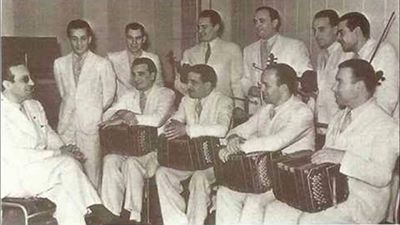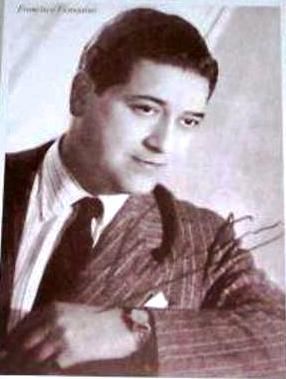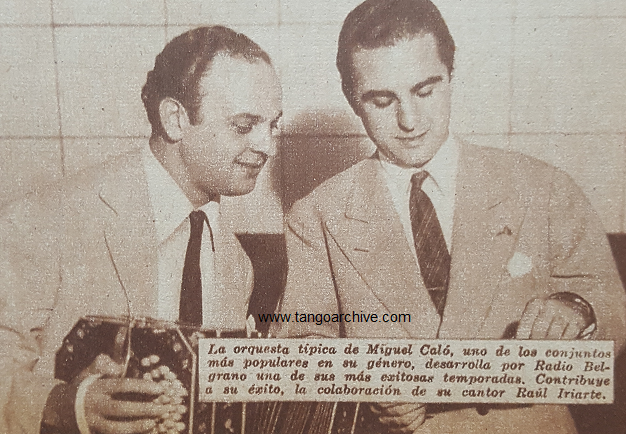“Nobleza de arrabal” by Carlos Di Sarli y su Orquesta Típica, 1940.
 Carlos Di Sarli y su Orquesta Típica
Carlos Di Sarli y su Orquesta Típica
His early groups were sextets with which he recorded 48 numbers from November 26, 1928 to August 14, 1931.
Previously he had played piano in a large number of movie theaters as background music for silent movies. In 1923 he joined the group led by Anselmo Aieta.
The following year he played with the outfit fronted by Juan Pedro Castillo and, also, in a trio along with Alejandro Scarpino (bandoneon) and Lorenzo Olivari (violin) to back up the singers that appear on the LOX Radio Cultura radio station.
In the mid- 1926 Osvaldo Fresedo summoned him to perform as piano player of a second orchestra he had put together to appear at the same time of his main aggregation in which the pianist was José María Rizzuti.
1940. Carlos Di Sarli (piano); Roberto Guisado, Ángel Goicoechea, Alfredo Pérez and Antonio Rossi (violins); Roberto Gianitelli, Félix Verdi, Domingo Sánchez, Roberto Mititieri and Luis Porcell (bandoneons); Domingo Capurro (double bass) and Roberto Rufino (vocals).
Continue reading at www.todotango.com…
Listen and buy:
 |
 |








